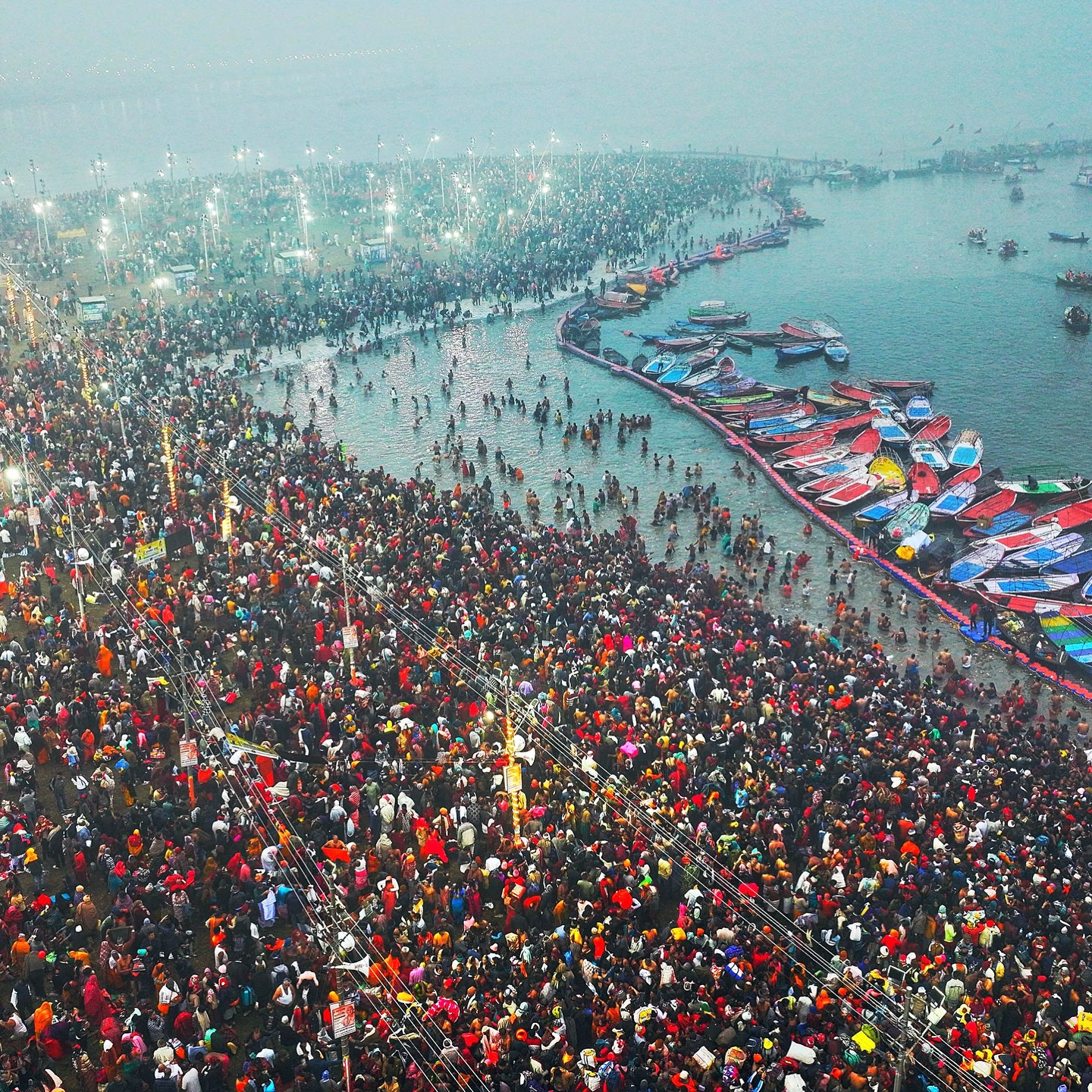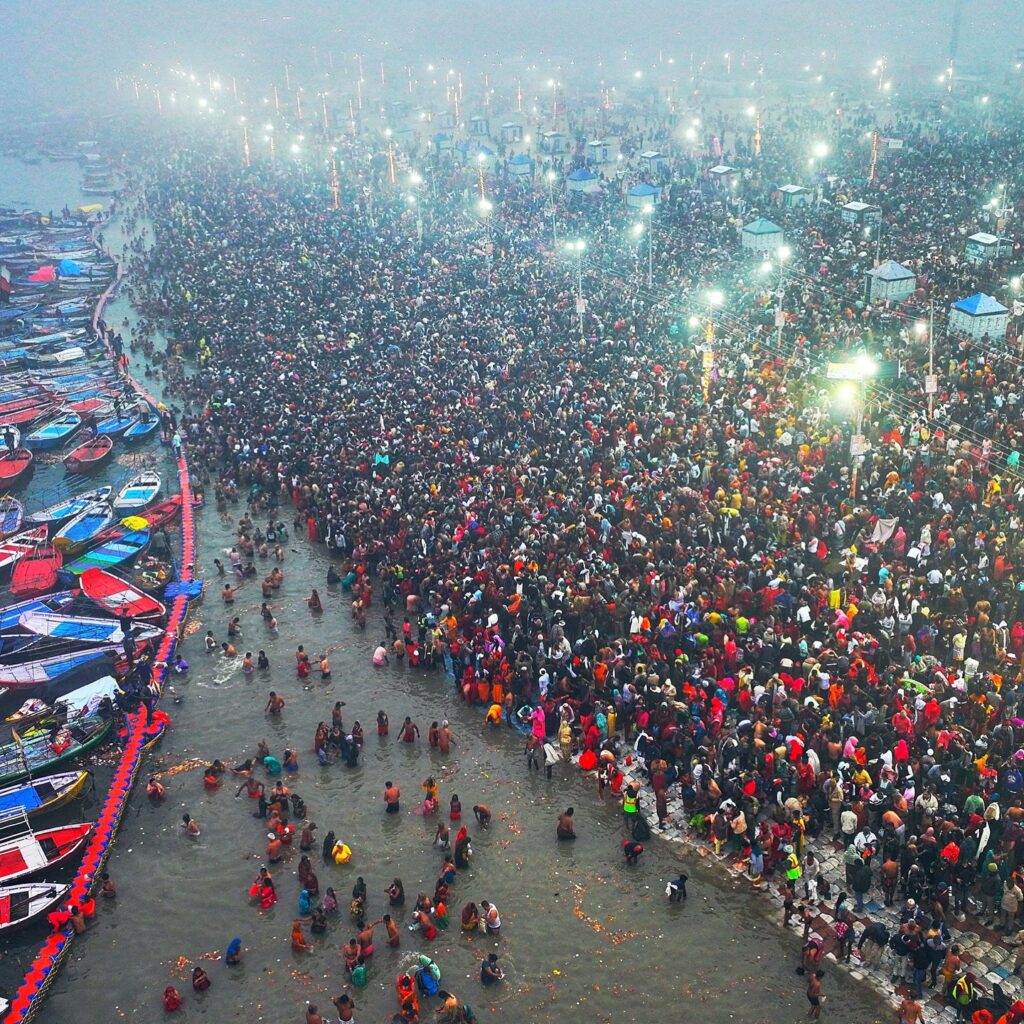
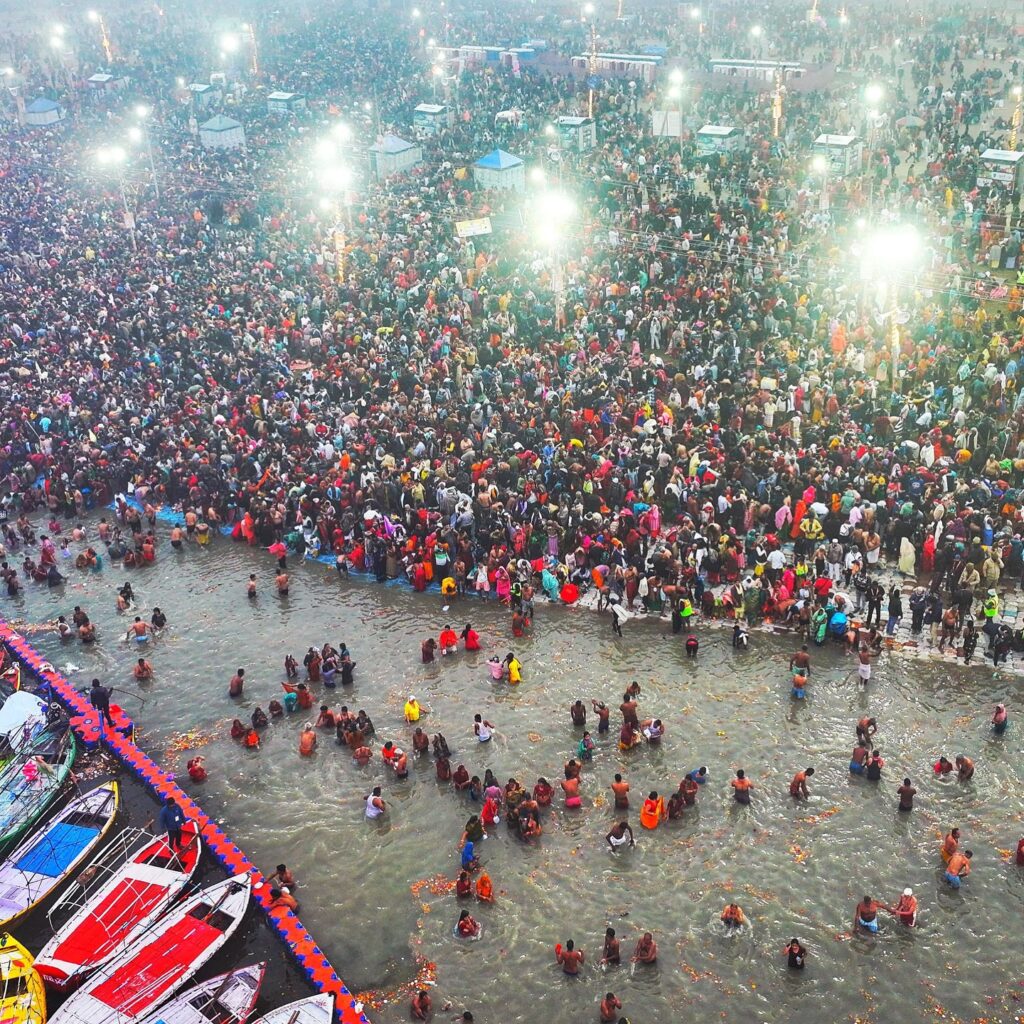
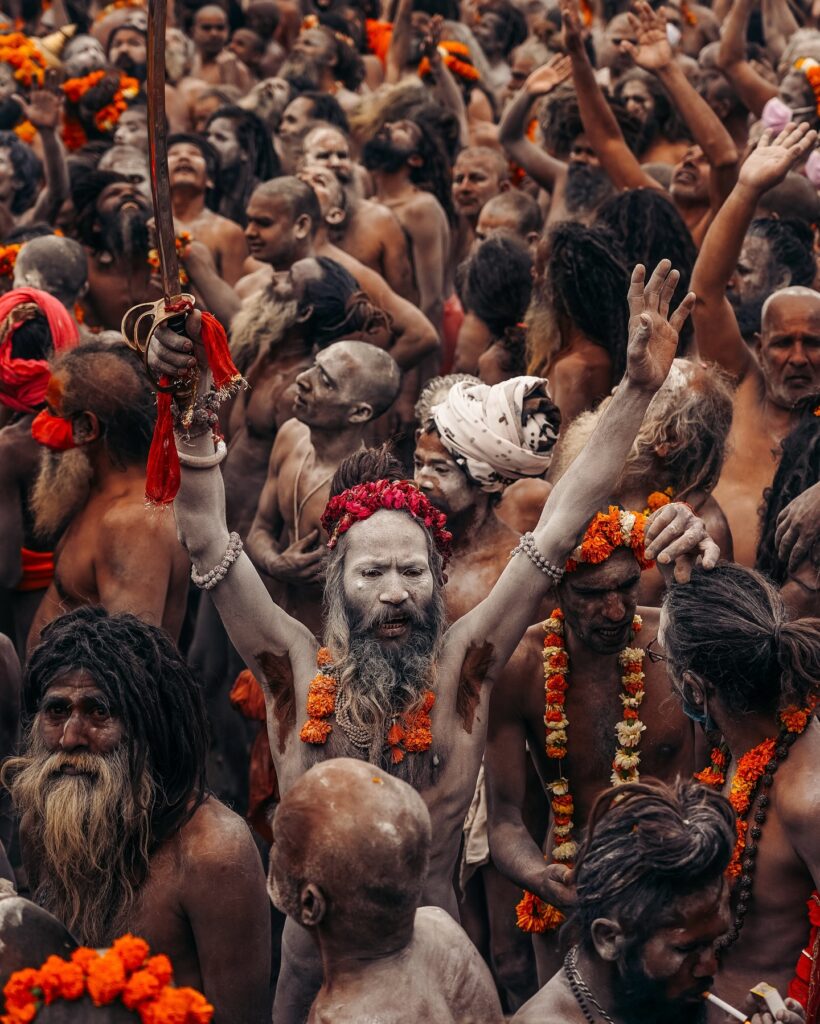
kumbhmela 2025
The Kumbh Mela, one of the largest religious congregations in the world, is set to take place in 2025, with Prayagraj serving as the host city. This grand festival, deeply embedded in Hindu traditions and spiritual practices, attracts millions of devotees, saints, and tourists from around the globe. The 2025 Kumbh Mela is expected to be a monumental event, combining ancient rituals with modern arrangements to create a seamless experience for participants. This article delves into the history, significance, rituals, preparations, and cultural impact of the Kumbh Mela, offering an in-depth understanding of its enduring legacy.The Kumbh Mela 2025 promises to be a landmark event, blending the sanctity of ancient rituals with the efficiency of modern technology. As millions of devotees gather at the sacred confluence in Prayagraj, the festival will reaffirm its role as a beacon of faith, unity, and cultural heritage. Beyond its religious significance, the Kumbh Mela is a celebration of humanity’s eternal quest for spiritual enlightenment and universal harmony.
Historical and Mythological Origins
The roots of the Kumbh Mela can be traced to ancient Hindu mythology, particularly the story of the Samudra Manthan or the churning of the ocean. According to legend, the gods (Devas) and demons (Asuras) collaborated to churn the ocean of milk to obtain the amrita (nectar of immortality). When the nectar emerged, a fierce battle broke out over its possession. To protect it from falling into the hands of the demons, the celestial bird Garuda carried the pot of nectar across the skies. During his flight, drops of nectar spilled at four locations—Prayagraj, Haridwar, Ujjain, and Nashik—sanctifying them as sacred sites.
These locations became the venues for the Kumbh Mela, held cyclically every 12 years at each site. The first documented account of the Kumbh Mela appears in the 7th-century writings of the Chinese traveler Xuanzang, who described the massive gatherings of pilgrims at Prayagraj.
Significance of the KumbhMela, Prayagraj
The Kumbh Mela transcends its religious connotations to become a cultural and spiritual phenomenon. Its significance lies in the following aspects:
1. Spiritual Purification
The primary objective for pilgrims attending the Kumbh Mela is to bathe in the holy rivers at the confluence of the Ganga, Yamuna, and the mythical Saraswati. This act, known as snan, is believed to cleanse the soul of sins and grant salvation (moksha).
2. Unity in Diversity
The Kumbh Mela is a convergence of faiths, philosophies, and spiritual practices. It brings together people from all walks of life, transcending caste, creed, and regional differences, to celebrate the shared human quest for divine connection.
3. Showcase of Akharas
The Kumbh Mela is a platform for Akharas, traditional monastic orders of Hinduism, to demonstrate their strength and unity. The processions of Naga sadhus (ascetics who renounce worldly possessions) are a prominent feature of the festival.
4. Cultural Preservation
The festival serves as a repository of India’s rich cultural and spiritual heritage. Through music, dance, art, and religious discourses, the Kumbh Mela celebrates the vibrancy and diversity of Indian traditions.
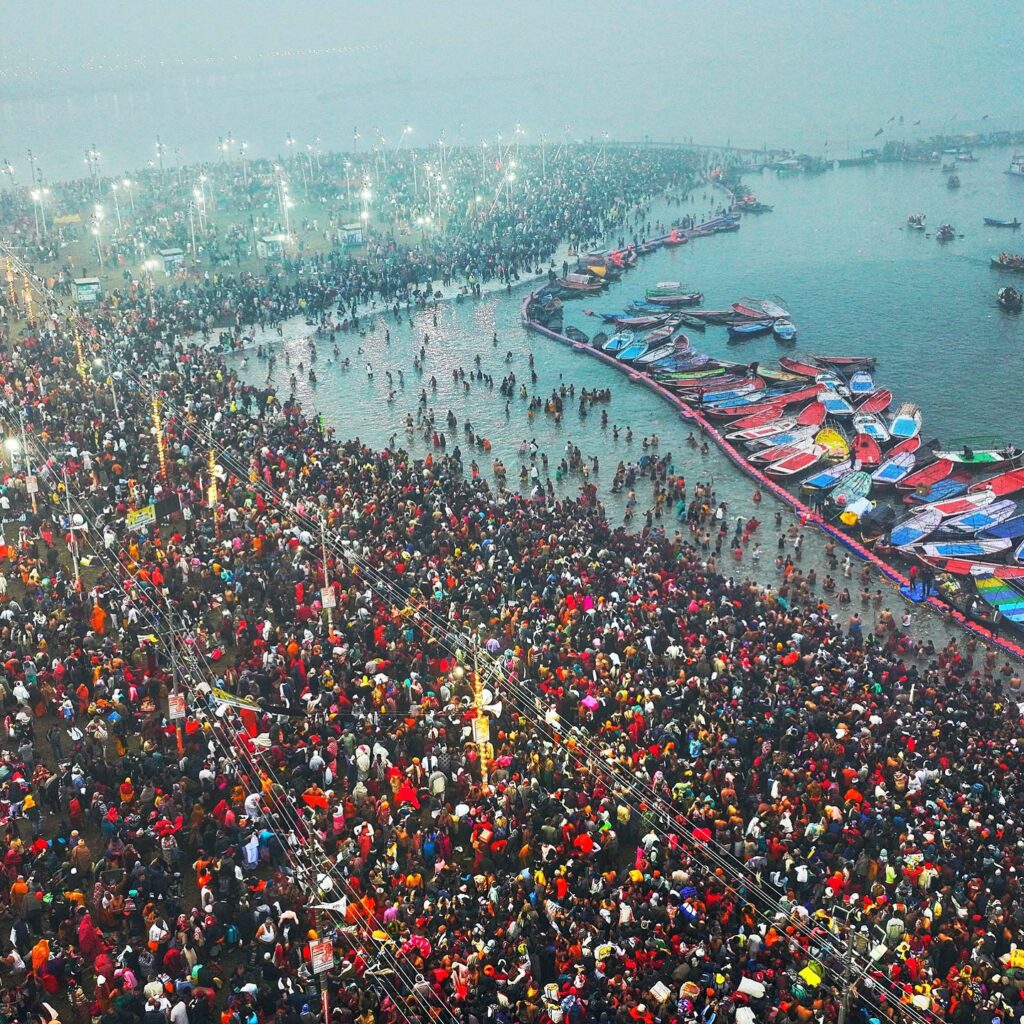
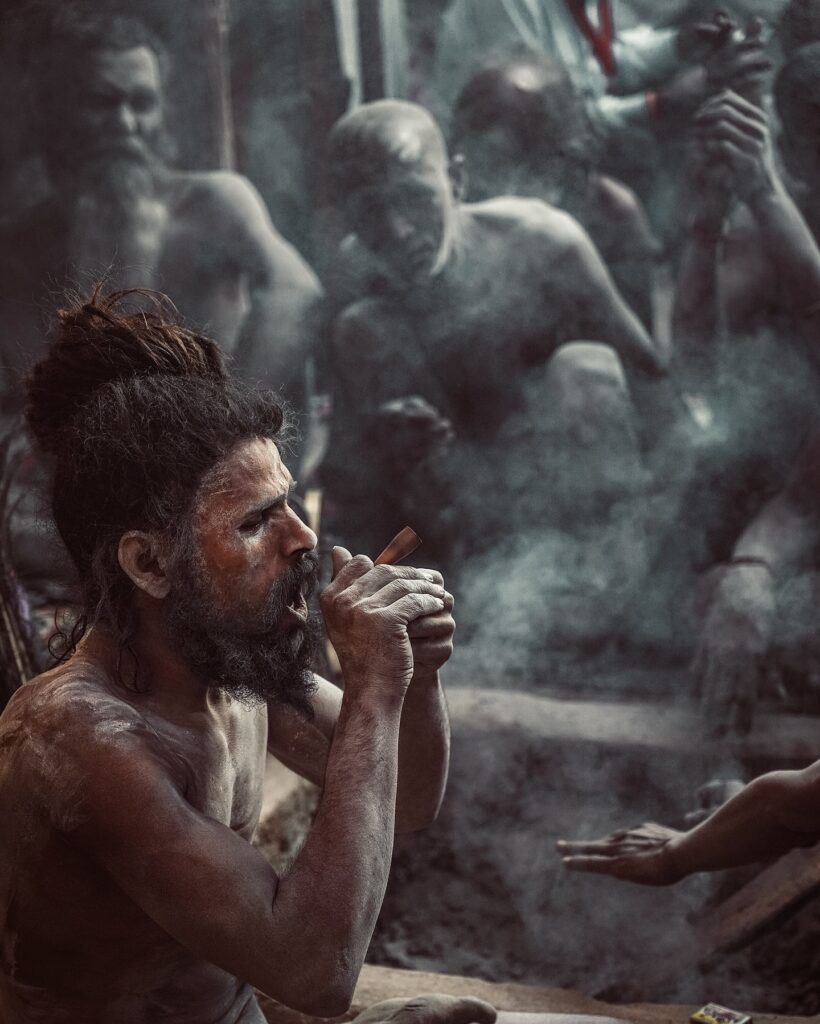
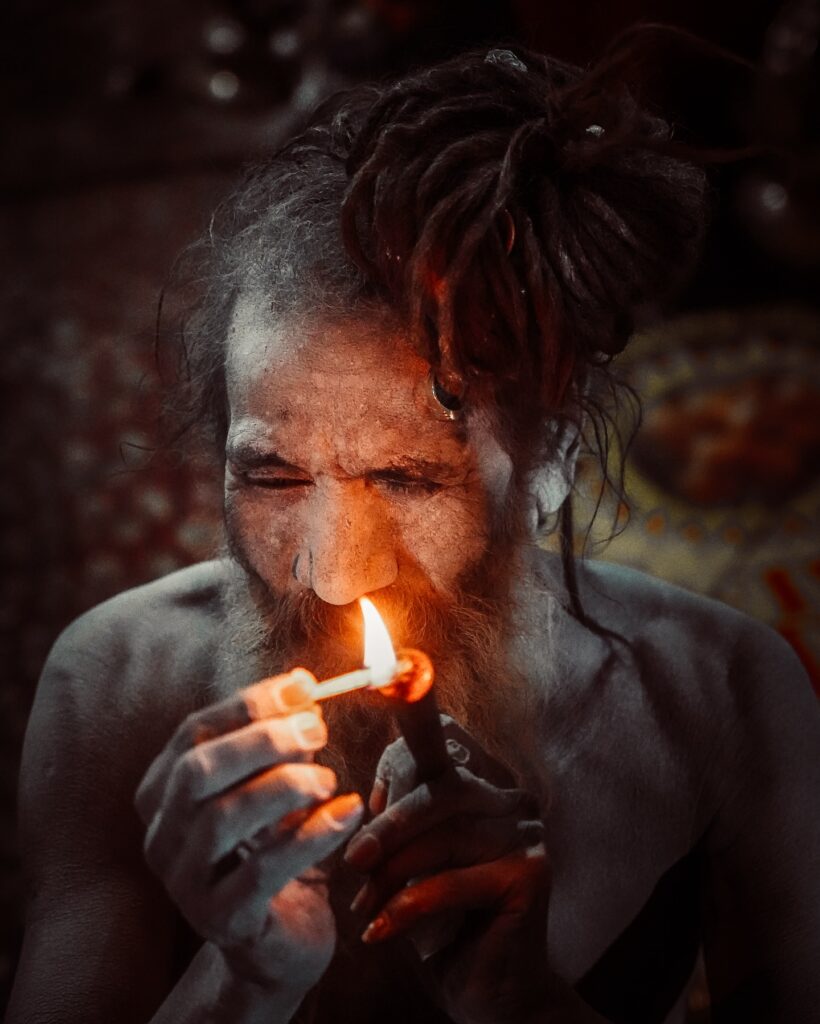
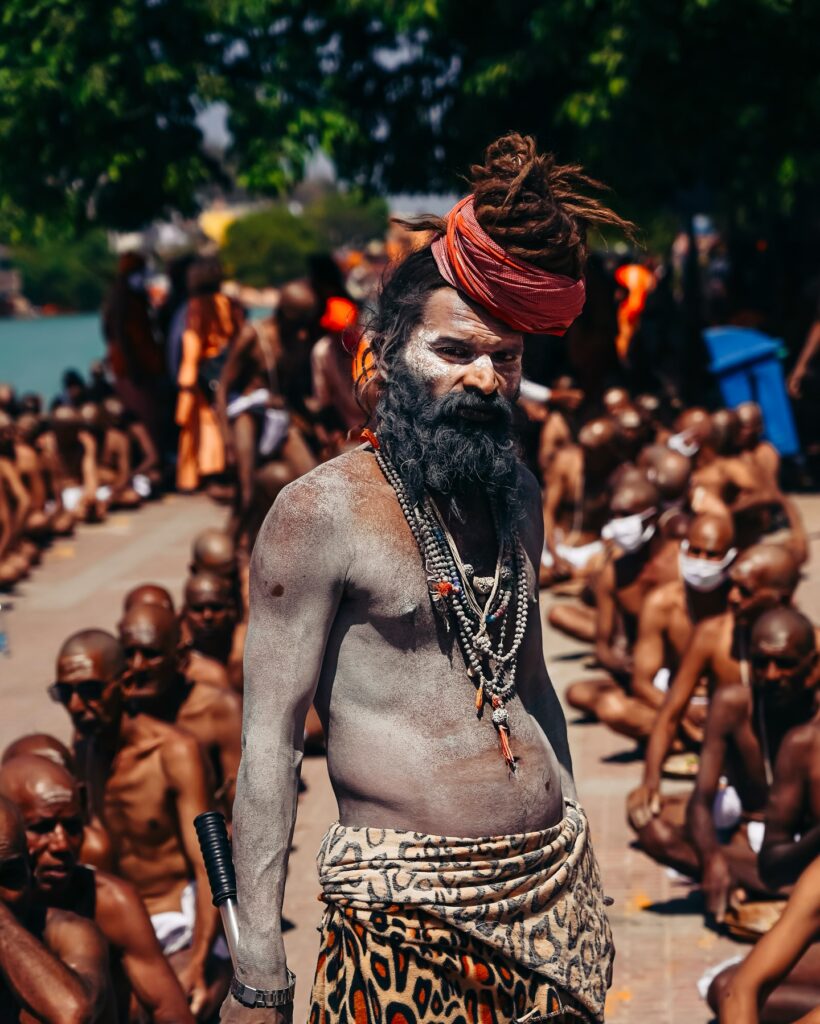
Rituals and Practices
The Kumbh Mela is a meticulously organized event with rituals that hold deep spiritual significance.
1. Shahi Snan (Royal Bath)
The Shahi Snan, or royal bath, is the most significant ritual of the Kumbh Mela. On specific auspicious dates, processions of sadhus and saints from various Akharas proceed to the bathing ghats to perform ceremonial dips in the holy rivers.
2. Yajnas and Pujas
Devotees participate in yajnas (fire sacrifices) and pujas (worship rituals) to seek divine blessings. Temples and temporary shrines host continuous prayers, chanting, and religious discourses.
3. Processions and Gatherings
Grand processions of Akharas, accompanied by music, chants, and displays of martial arts, are a major attraction. These processions reflect the unity and discipline of the monastic orders.
4. Spiritual Discussions
The Kumbh Mela also serves as a platform for philosophical debates and spiritual discussions. Saints, scholars, and devotees gather to exchange knowledge and ideas on Vedic scriptures and spiritual practices.
Preparations for Kumbh Mela 2025
The Kumbh Mela 2025 is expected to draw millions of participants, making meticulous planning and preparation essential. The authorities are implementing advanced strategies to ensure the smooth execution of the event.
1. Infrastructure Development
Significant investments are being made to enhance infrastructure, including roads, bridges, sanitation facilities, and temporary shelters. High-capacity ghats are constructing to accommodate the large number of pilgrims.
2. Technology Integration
Modern technology is using to improve the management of the festival. Mobile apps and online portals are being developed to provide real-time information about routes, accommodations, and event schedules. AI-based crowd management systems and drone surveillance will ensure safety and order.
3. Environmental Conservation
Efforts are being made to minimize the environmental impact of the Kumbh Mela. Initiatives include waste management programs, water conservation measures, and the use of eco-friendly materials in temporary structures.
4. Healthcare Facilities
Robust healthcare arrangements, including temporary hospitals, ambulances, and medical teams, are being set up to address health concerns and emergencies during the event.
Auspicious Dates for 2025 Kumbh Mela
The Kumbh Mela follows a complex astrological calendar. The most auspicious dates for bathing, known as Shahi Snan days, are determined based on planetary alignments. These dates are considered highly favorable for spiritual practices and will witness the largest gatherings of devotees.
Challenges and Opportunities
The Kumbh Mela, while a spiritual event, also poses several logistical and environmental challenges.
Challenges
- Crowd Management: Ensuring the safety and comfort of millions of pilgrims requires meticulous planning and coordination.
- Environmental Impact: The large-scale gathering can strain natural resources and lead to pollution if not managed responsibl
Opportunities
- Cultural Diplomacy: The Kumbh Mela is an opportunity to showcase India’s spiritual and cultural heritage to the global community.
- Tourism Boost: The event generates significant revenue through tourism, benefiting local economies and promoting regional development.
- Spiritual Growth: For participants, the Kumbh Mela offers a unique opportunity for introspection, learning, and spiritual renewal.
Global Recognition and Influence
The Kumbh Mela has gained international recognition as a UNESCO Intangible Cultural Heritage of Humanity. Its global appeal has led to increased participation from foreign tourists and scholars, further enhancing its cultural significance. The event serves as a bridge between ancient traditions and modern aspirations, inspiring people from diverse backgrounds to explore the depths of Indian spirituality.
| Date | Day | Event Name | Significance |
|---|---|---|---|
| January 13, 2025 | Monday | Paush Purnima | Marks the full moon day in the Hindu month of Paush; signifies the beginning of the Kumbh Mela. |
| January 14, 2025 | Tuesday | Makar Sankranti (Shahi Snan) | Celebrates the sun’s transition into Capricorn; considered highly auspicious for bathing rituals. |
| January 29, 2025 | Wednesday | Mauni Amavasya (Shahi Snan) | New moon day dedicated to silence and meditation; regarded as the most sacred day for a holy dip. |
| February 3, 2025 | Monday | Basant Panchami (Shahi Snan) | Heralds the arrival of spring; an auspicious day for initiating new ventures and spiritual practices. |
| February 4, 2025 | Tuesday | Achla Saptami (Important Bathing) | Dedicated to the worship of the sun god; signifies firmness and unwavering devotion. |
| February 12, 2025 | Wednesday | Maghi Purnima (Important Bathing) | Full moon day in the month of Magha; associated with charity and religious observances. |
| February 26, 2025 | Wednesday | Maha Shivratri (Important Bathing) | Night dedicated to Lord Shiva; marks the culmination of the Kumbh Mela festivities. |
These dates are pivotal for pilgrims seeking spiritual purification and blessings during the Maha Kumbh Mela 2025. Each event holds unique religious significance, attracting millions of devotees to participate in the sacred bathing rituals at the Triveni Sangam in Prayagraj.
spiritual enlightenment and universal harmony.
Other Links
Patora Dam and Yogeshwar Temple Nuapada
